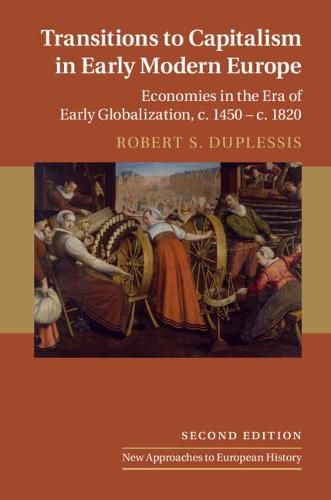Readings Newsletter
Become a Readings Member to make your shopping experience even easier.
Sign in or sign up for free!
You’re not far away from qualifying for FREE standard shipping within Australia
You’ve qualified for FREE standard shipping within Australia
The cart is loading…






Between the end of the Middle Ages and the early nineteenth century, the long-established structures and practices of European trade, agriculture, and industry were disparately but profoundly transformed. Revised, updated, and expanded, this second edition of Transitions to Capitalism in Early Modern Europe narrates and analyses the diverse trends that greatly enlarged European commerce, permanently modified rural and urban production, gave birth to new social classes, remade consumer habits, and altered global economic geographies, culminating in capitalist industrial revolution. Broad in chronological and geographical scope and explicitly comparative, Robert S. DuPlessis’ book introduces readers to a wealth of information drawn from throughout Eastern, Western and Mediterranean Europe, as well as to classic interpretations, current debates, new scholarship, and suggestions for further reading.
$9.00 standard shipping within Australia
FREE standard shipping within Australia for orders over $100.00
Express & International shipping calculated at checkout
Between the end of the Middle Ages and the early nineteenth century, the long-established structures and practices of European trade, agriculture, and industry were disparately but profoundly transformed. Revised, updated, and expanded, this second edition of Transitions to Capitalism in Early Modern Europe narrates and analyses the diverse trends that greatly enlarged European commerce, permanently modified rural and urban production, gave birth to new social classes, remade consumer habits, and altered global economic geographies, culminating in capitalist industrial revolution. Broad in chronological and geographical scope and explicitly comparative, Robert S. DuPlessis’ book introduces readers to a wealth of information drawn from throughout Eastern, Western and Mediterranean Europe, as well as to classic interpretations, current debates, new scholarship, and suggestions for further reading.